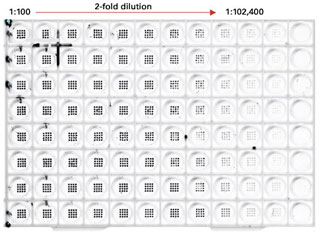Labeled Streptavidins
Products
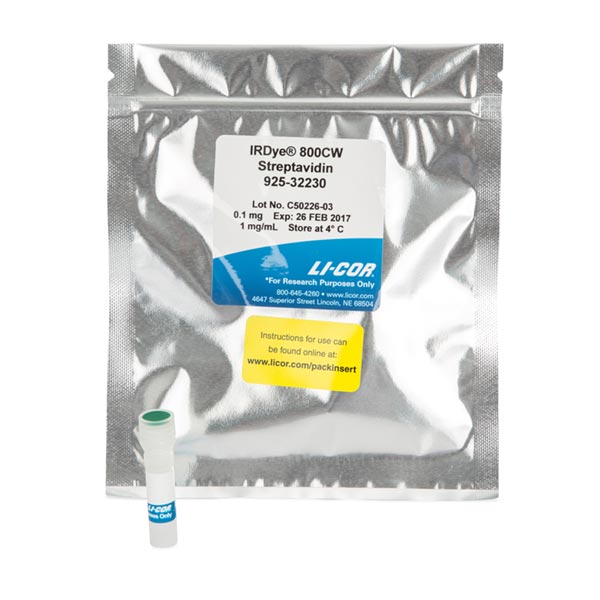
IRDye® 800CW Streptavidin
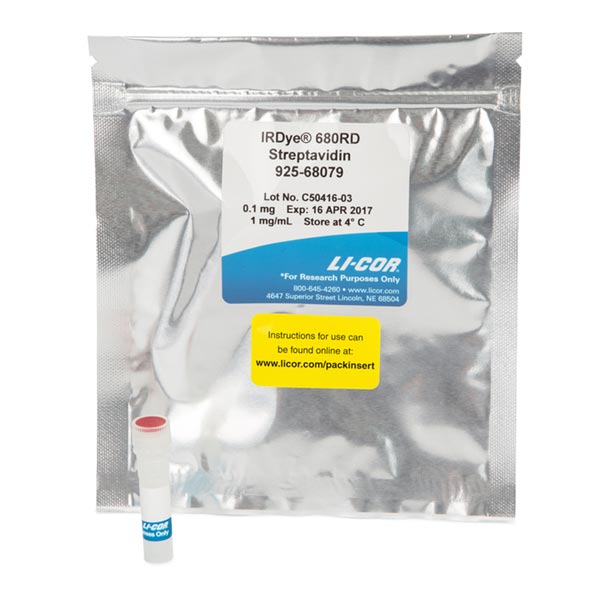
IRDye® 680RD Streptavidin
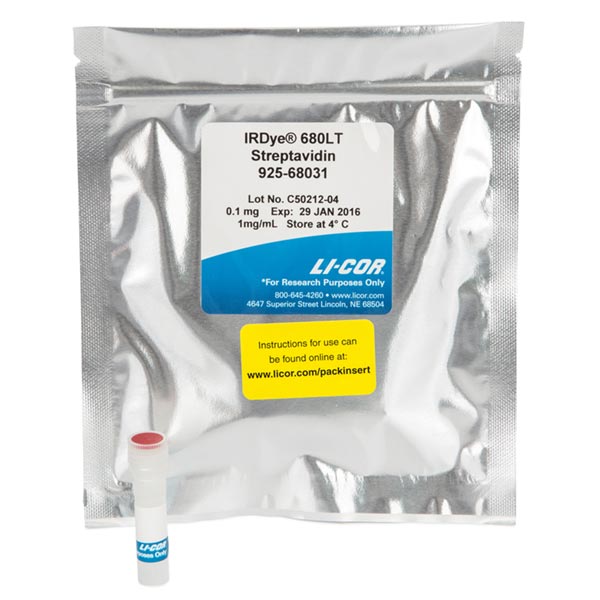
IRDye® 680LT Streptavidin

VRDye™ 549 Streptavidin
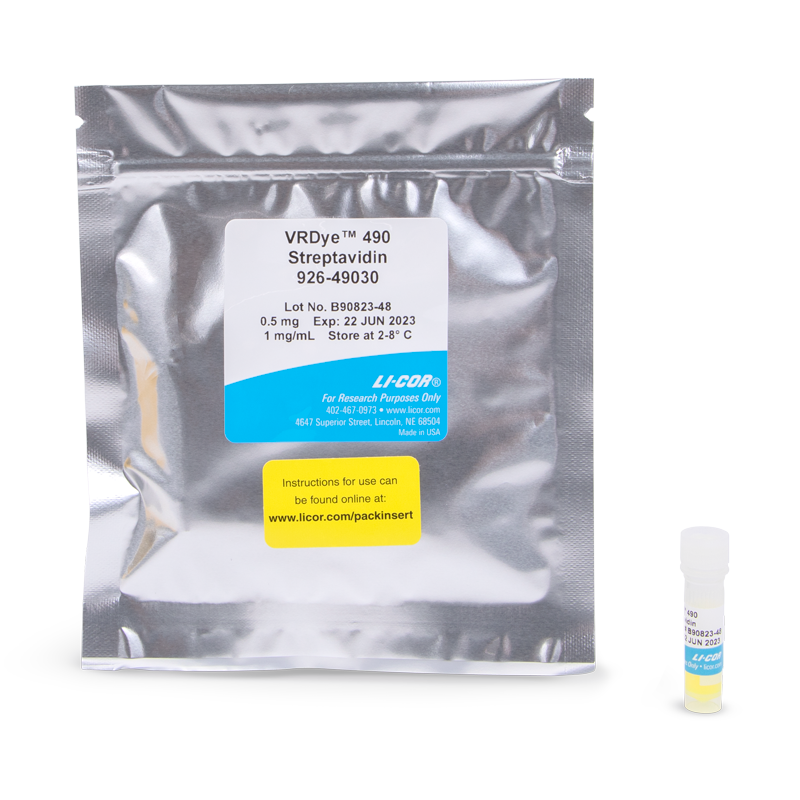
VRDye™ 490 Streptavidin
Streptavidin binds to biotin very strongly and is used to detect biotinylated proteins.
Fluorescent dye-labeled streptavidins can be used as a secondary detection reagent for microscopy, protein arrays, In-Gel Westerns, and Western blotting.
IRDye and VRDye Streptavidin Specifications
All streptavidins are supplied as a liquid in buffer containing 10 mM phosphate, 183 mM NaCl, 2.7 nM KCl, pH 7.4 with sodium azide 0.005% (w/v) as a preservative.
To use, centrifuge briefly before use to eliminate aggregates that may have formed in solution. For IRDye® Streptavidin, a final concentration of 0.2 to 1.0 µg/ml (1:1,000 to 1:5,000) is usually satisfactory for most applications. For VRDye™ Streptavidin, a concentration of 1:2,000 to 1:5,000 is usually satisfactory for Western blotting. However, appropriate dilution may need to be determined empirically.
For membrane-based applications and In-Gel Westerns, it is recommended to add SDS (0.02% to 0.1% final concentration), in addition to Tween® 20 (0.1 to 0.2% final concentration) during the detection incubation step to reduce non-specific background staining.
